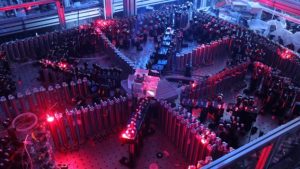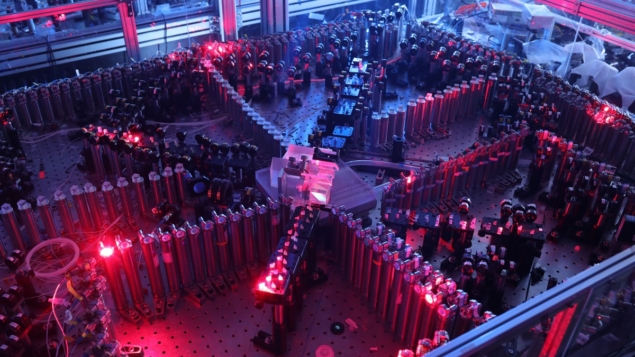
A team of Chinese researchers report that an optical circuit has performed a quantum computation called “Gaussian boson sampling” (GBS) much faster — in fact, 100 trillion times faster — than a supercomputer could, according to a story in Physics World.
Primarily, GBS now shows that a quantum computation can be done much faster than the same calculation on a conventional computer – referred to by some experts as quantum advantage and others as quantum supremacy – but the researchers, Jian-Wei Pan and Chao-Yang Lu at the University of Science and Technology of China in Hefei, and colleagues also suggest there could be practical applications.
Pan may have been referring to this advance at a scientific conference held in China a few months ago.
Boson sampling is a computing approach that features the output of a linear optical circuit with multiple inputs and multiple outputs. Single photons enter the circuit in parallel and encounter optical components such as beam splitters, according to Physics World. Due to their bosonic nature, if two photons arrive at a beam splitter at the same time, they will both follow the same path. This makes it difficult for conventional computers to calculate the output of the circuit even for modest numbers of input photons and output channels. While boson sampling is difficult to do and requires state-of-the art quantum optics, it should vastly outperform even the most powerful supercomputers

A Boson sampling circuit can be thought of as a matrix that makes a transformation of the input photons.
the team estimateS that China’s fastest supercomputer Sunway TaihuLight would take 2.5 billion years to do the calculation.
In this research, the team used a related technique called Gaussian boson sampling (GBS), in which single mode squeezed states of light are used in place of single photons. Instead of determining the permanent of the circuit, Gaussian boson sampling gives a similar quantity that is also extremely difficult to compute using a conventional computer.
The optical circuit has 100 inputs and 100 outputs and includes 300 beam splitters and 75 mirrors that are arranged in a random manner. A photon at any input port can emerge from any of the output ports, according to Physics World.
GBS took about 200 seconds to make the calculation. By comparision, the team estimates that China’s fastest supercomputer Sunway TaihuLight would take 2.5 billion years to do the calculation.
Lu told Physics World that the team has made a “considerable improvement of the efficiency of the quantum light sources,” which he says should enable a 144×144 version of the experiment. Looking further ahead he says, “In 2021, we will make the GBS machine more tuneable, more compact and more stable, and look for practical applications”.
The research is described in Science.
If you found this article to be informative, you can explore more current quantum news here, exclusives, interviews, and podcasts.


















